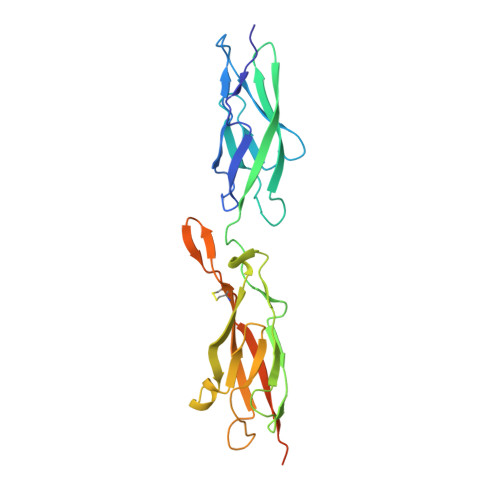Heterophilic and homophilic cadherin interactions in intestinal intermicrovillar links are species dependent.
Gray, M.E., Johnson, Z.R., Modak, D., Tamilselvan, E., Tyska, M.J., Sotomayor, M.(2021) PLoS Biol 19: e3001463-e3001463
- PubMed: 34871294
- DOI: https://doi.org/10.1371/journal.pbio.3001463
- Primary Citation of Related Structures:
7N86 - PubMed Abstract:
Enterocytes are specialized epithelial cells lining the luminal surface of the small intestine that build densely packed arrays of microvilli known as brush borders. These microvilli drive nutrient absorption and are arranged in a hexagonal pattern maintained by intermicrovillar links formed by 2 nonclassical members of the cadherin superfamily of calcium-dependent cell adhesion proteins: protocadherin-24 (PCDH24, also known as CDHR2) and the mucin-like protocadherin (CDHR5). The extracellular domains of these proteins are involved in heterophilic and homophilic interactions important for intermicrovillar function, yet the structural determinants of these interactions remain unresolved. Here, we present X-ray crystal structures of the PCDH24 and CDHR5 extracellular tips and analyze their species-specific features relevant for adhesive interactions. In parallel, we use binding assays to identify the PCDH24 and CDHR5 domains involved in both heterophilic and homophilic adhesion for human and mouse proteins. Our results suggest that homophilic and heterophilic interactions involving PCDH24 and CDHR5 are species dependent with unique and distinct minimal adhesive units.
Organizational Affiliation:
Ohio State Biochemistry Program, The Ohio State University, Columbus, Ohio, United States of America.




















